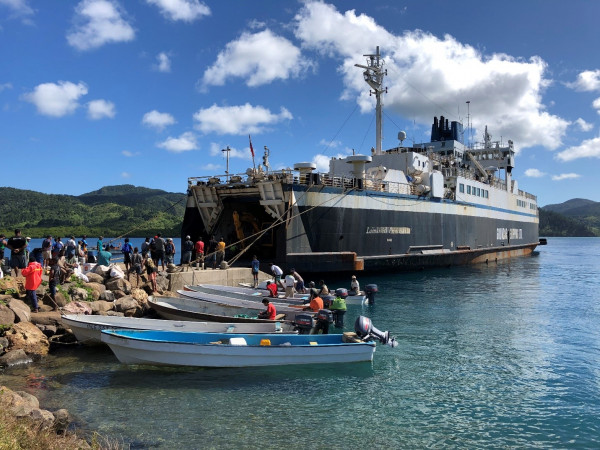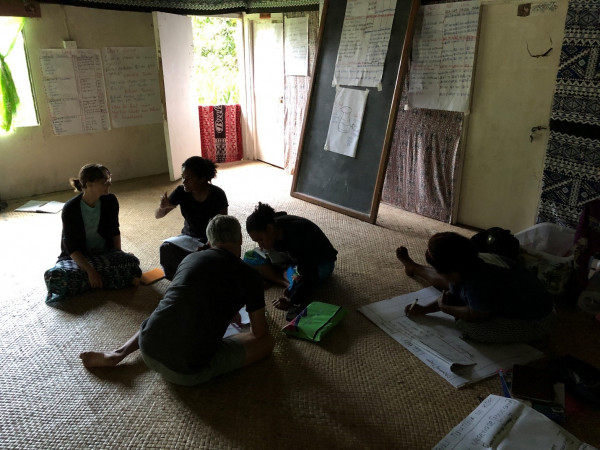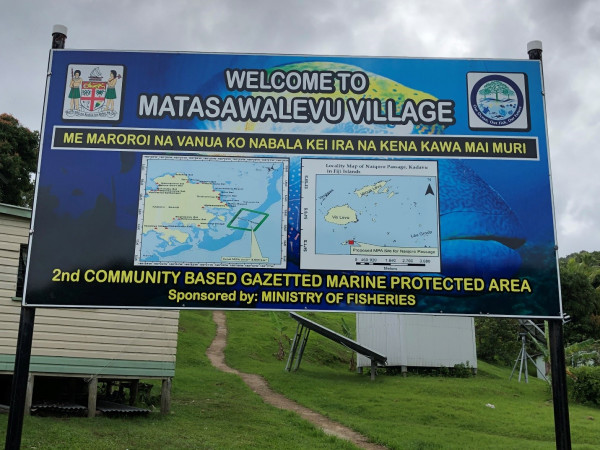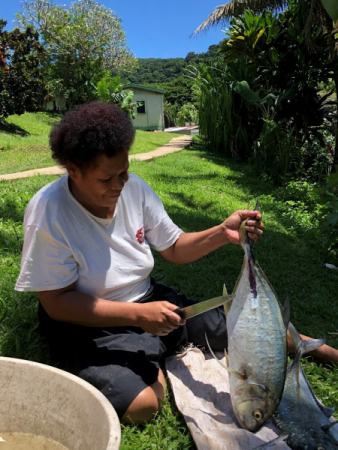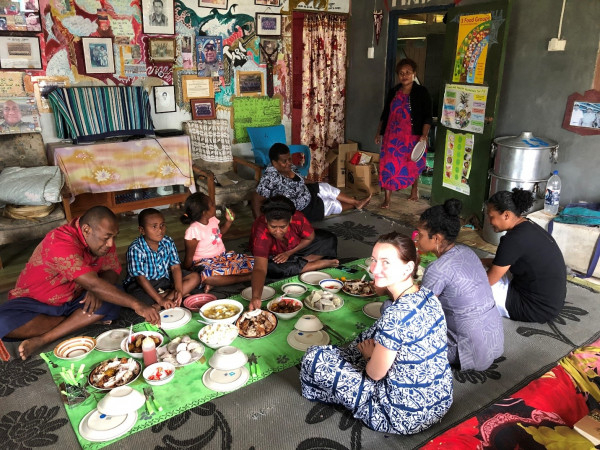Dieser Text ist zur Zeit nur auf Englisch verfügbar...
Two weeks of joint fieldwork in Nakasaleka District on Kadavu Island, Fiji
This fieldwork period was jointly planned with a team from USP’s Institute of Marine Resources (IMR; Dr. Simon Harding and RA Kalisiana Marama, Western Pacific Coastal Fisheries Project (WPCFP), https://www.usp.ac.fj/index.php?id=wpcfp), and our co-supervised intern Ulamila Matairakula, who has joined SOCPacific for 6 months (Sept 2019 - Feb 2020). In fact, this means that we tried to combine two project activities during this trip: 1) a Marine Resource Value (MRV) survey designed and conducted by IMR to explore the economic value of coastal fisheries in Kadavu, with 2) SOCPacific’s fieldwork on the sociocultural value of these fisheries and on the interwoven fisheries and conservation issues.
A good correspondence with the Kadavu Provincial Office resulted in the chance of being accompanied throughout the fieldwork in Nakasaleka District by Alipate Nakasava (Assistant Roko Tui of Kadavu) and Kelera Kuli (Conservation Officer) from the Provincial Office in Vunisea. In this District, the team was based in three villages: Matasawalevu, Kavala, and Lomanikoro.
Elodie and Annette, often accompanied by Ulamila, conducted qualitative interviews and observations in Matasawalevu (in direct proximity of the Naiqoro Passage Spawning Aggregation Marine Reserve, established in November 2018) and Kavala (in the same bay as the Fisheries station, as well as where the ferry from the capital arrives twice a week). These were in the format of talanoa sessions with various community members in both formal and informal settings, with the least disruption to their planned events and daily activities (e.g., while preparing fish). The interviews covered several topics, such as local fishing methods, the connections between local fisheries management and culturally significant fishes, and changes since the establishment of this gazetted marine protected area). The IMR team visited 12 villages in Nakasaleka District (Matasawalevu, Nukuvou, Vacalea, Tiliva, Lavidi, Kavala, Solotavui, Lawaki, Lomanikoro, Nakaugasele, Nakaunakoro, Nakoronawa) and a few settlements for the MRV survey, based on questionnaires about fishing and gleaning activities.
In addition, the team organized drawing sessions in two primary schools, Tiliva District School and Nakasaleka District School, following the strict transdisciplinary protocol developed with specialists from IRD, aiming to explore the views of school communities on the sea and the resources therein. The activity involved children from Class 4 to Class 8, and was facilitated by the head teachers and teachers of the respective schools, who we would like to warmly thank for their welcome and assistance.
This joint fieldtrip allowed for the reinforcement of the SOCPacific’s partnership with USP, in particular with IMR. It aimed to establish interdisciplinary links between SOCPacific and WPCFP, to be pursued in 2020 with the cross-analysis of the data we have collected and the feedback we will provide to the people of Nakasaleka District.
We are deeply grateful for the hospitality the team has received in Nakasaleka District, and for being allowed to learn a lot.
The Lomaiviti Princess in Kavala Bay, Kadavu Island
Photos by Elodie Fache





